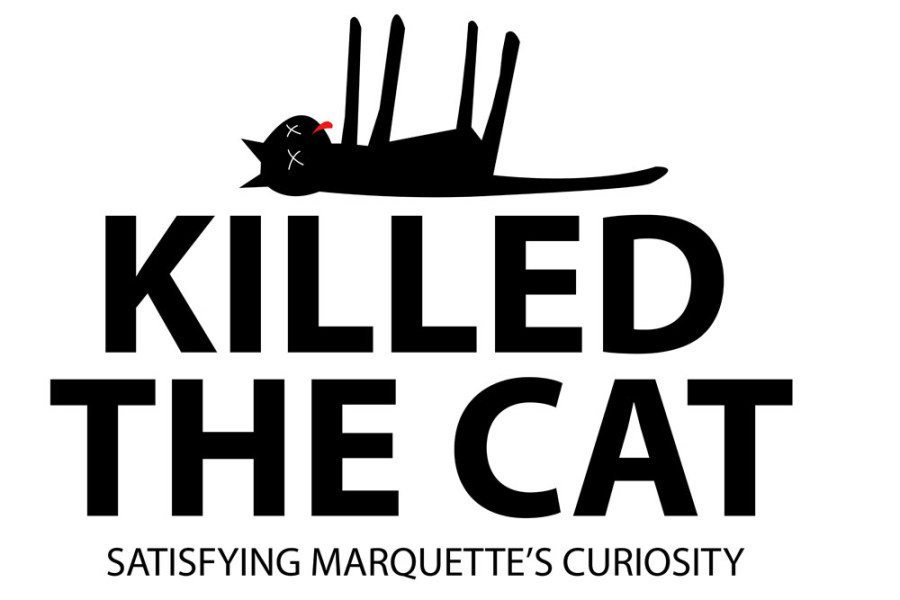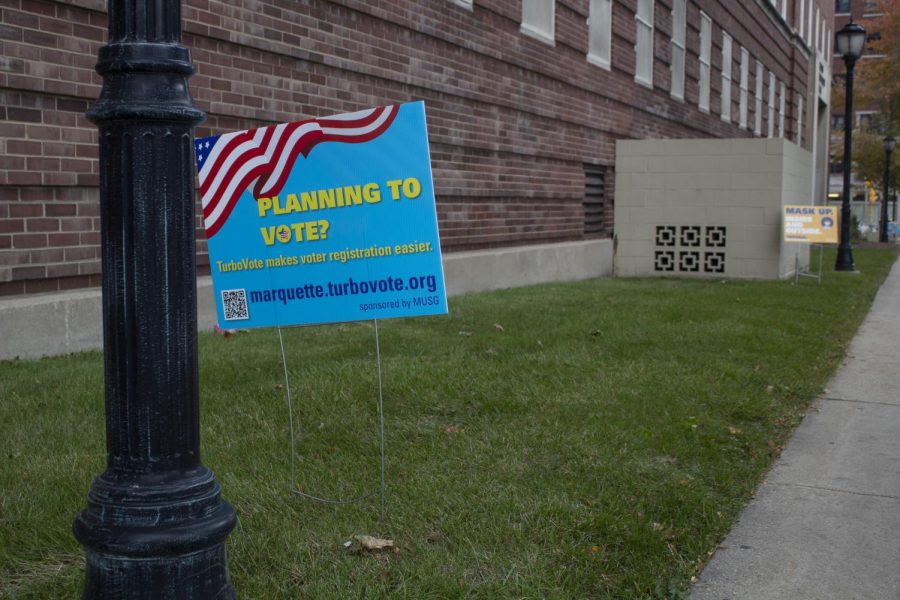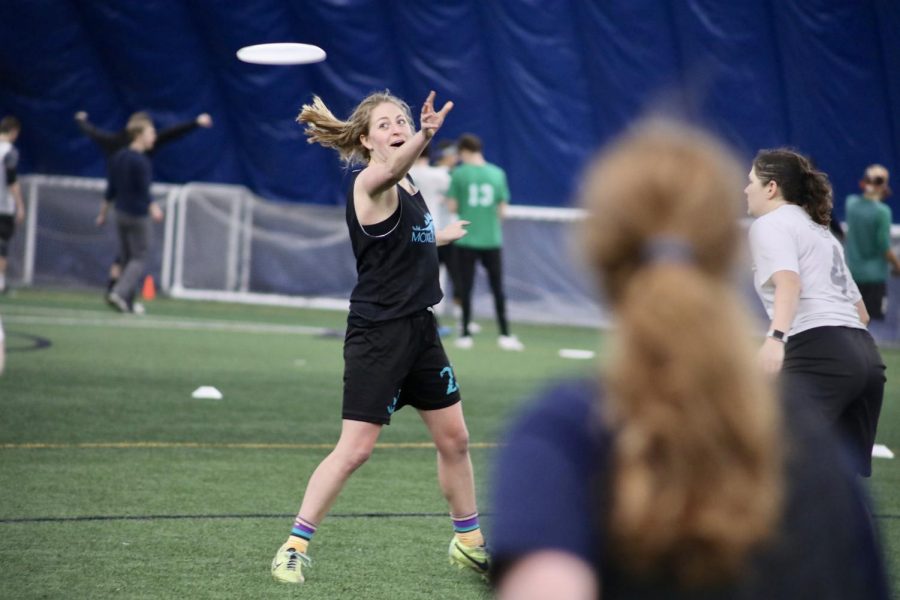With sub-zero temperatures and McCormick-sized freshmen dorms, it may be almost expected for tour guides of the university to embellish the truth to attract students. After investigating the tour guide process, though, it is clear that this is not the case.
“We’re in a position with our application numbers where we don’t need to ‘sell’ Marquette,” said Andrew Schneider, assistant dean of undergraduate admissions. “It’s not a sales pitch. There’ll be people that come here and love the tour, but in the end, they really want a football school. And that’s OK.”
After joining a one-hour tour to observe persuasive strategies from the guides, the Tribune found that tours provided prospective students with an accurate portrayal of Marquette.
The tour started with an information session led by admissions counselor Brian Hendricks. Key points included the application timelines, where the campus is in relation to Milwaukee and how a Jesuit university differs from others.
To signal the end of the session and beginning of the tours, Hendricks yelled “We are” and encouraged the prospective students to finish the chant with “Marquette” to shepherd the tour guides into the visiting room.
Guides came in with the names of students they would be giving a tour. Marquette admissions tries to match prospective students with guides in the same major or at least college. Each guide only took a few families.
“We try to cap tours at three families,” said Schneider. “Unlike some schools, we don’t have groups of 20 and tour guides with a megaphone. We want to keep the tour as fluid and conversational as possible.”
Kevin Clancy, a junior in the College of Communication and tour guide, led three families out of Zilber Hall and into freezing wind chills.
Clancy did not sugarcoat college life. While he praised Marquette’s average 14-1 student-to-faculty ratio, he did point out the large introductory lectures common in the first two years. If anything, Clancy called himself out on fulfilling the stereotype commonly seen in college brochures of students playing Frisbee on a manicured lawn.
“I was surprised when I found out people actually play Frisbee in college,” Clancy remarked. “But I joined them by the second day.”
Clancy showed the high school seniors a dorm room in McCormick Hall and attempted to reassure them the small size equated to a tight-knit floor community. Clancy was a McCormick resident himself two years ago as was one of the fathers on the tour who said McCormick was the same 25 years ago except for the addition of females.
McCormick is one of three residences halls most commonly shown on tours. Cobeen and Abbottsford are also shown, depending on the route guides take and the availability of show rooms.
The only inaccuracy in the tour, which was probably accidental, regarded the course options for the required second-level theology. He said options beyond Christian theology were available such as a study of Judaism or Islam. However, none of the world religions courses are approved to fulfill the second-level distribution requirement. All of these are 4000-level courses.
Aside from this slip, Clancy’s tour was an honest portrayal of Marquette. He did not rave about the food, only supplying a “not bad” commentary when a student asked.
The guide’s honesty is expected though. Admissions counselor Michael Hennicke said he tells newly trained guides that it is not their job to recruit Golden Eagles.
“It’s about framing the conversation,” Hennicke said. “Milwaukee is a city, and though it isn’t Pleasantville, here at Marquette we see this as a benefit.”
The proof is in Marquette’s admissions numbers. From the summer of 2012 through the summer of 2013, more than 9,000 prospective students visited Marquette’s campus, yet only around 2,000 enrolled. More than 25,000 applications were submitted for the Class of 2018, the most competitive year to date, Hendricks said.
BECOMING A TOUR GUIDE
There is a common misconception that the people chosen to be tour guides are the most bubbly and personable. Andrew Schneider, assistant dean of undergraduate admissions, debunked this myth.
“We look most for genuinity,” Schneider said. “But we also look for ‘personality chameleons’ who can relate to both 17-year old teenagers and their parents.”
AN ADMISSIONS LOVE STORY:
The summer before Michael Hennicke’s senior year of high school, he was placed in a tour group with Katie Pope, the woman who would later become his fiancée.
The duo reunited in college after both were hired by the admissions office as student workers. Pope worked in the Shadow Program and later became a tour guide while Hennicke became a tour guide his freshman year. They never dated in college, but were friends.
Eight years after their first encounter one summer day, the two started dating when Hennicke joined Marquette’s admissions team. Pope had already been working as an admissions counselor a year before Hennicke was hired.
About 110-150 students apply each year to earn the coveted position of Marquette tour guide, yet only 15 percent get the job. The staff is comprised of approximately 50 tour guides.
“It is a huge honor to be entrusted with the job of passing the information on to perspective students and families,” Clancy said.
Incoming tour guides must complete a series of shadowing stages that includes listening to three admissions presentations to learn basic facts like admissions deadlines. Guides in training must also observe three current tours to learn the routes and talking points. The next step for incoming guides is to lead three tours that are shadowed by a current tour guide.
Finally, at the end of the training process, the admissions office requires each tour guide to pass a test that examines knowledge of the campus itself as well as the university’s different programs. This process can take as little as a month, Clancy said.
Prospective students and families can ask almost any question and tour guides will have an answer. However, Clancy explained he does not feel comfortable answering questions regarding his personal financial situation or his academic record. Tour guides also do not predict students’ chances of admittance.






